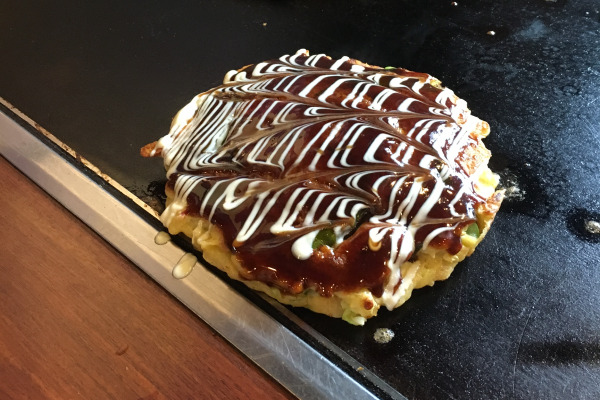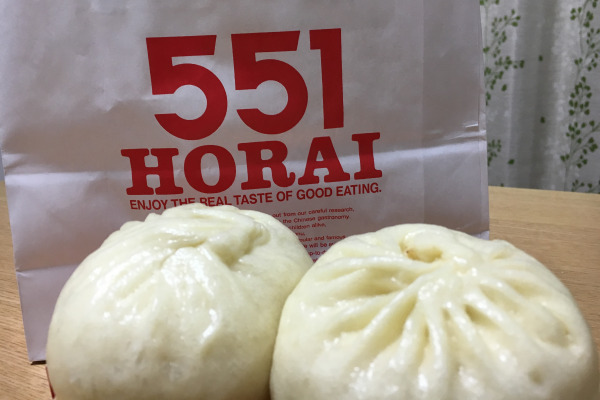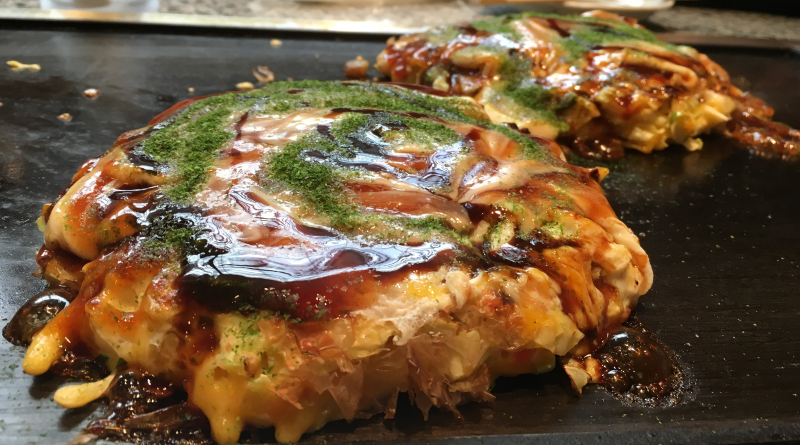Best food in Osaka: Our Top Ten
A Osaka has a lot of delicious food and Osakans pride themselves on providing a tasty array of dishes. There is so much food in Osaka that it can feel pretty overwhelming. But of course, the locals know which are the best. After living here for nearly a decade, we feel we’ve earned the title of “local” well enough to give an authentic recommendation.
Our TOP TEN Food in Osaka
1. Kitsuneudon
Many people might not realize it, but when in Osaka Kitsune Udon is a must. Kitsune udon has aburaage, or fried tofu, on top of udon. Kitsune Udon is so commonly eaten across the country that not so many people even don’t know it’s from Osaka, but it was invented in Usamitsei Matsubaya in the late 19th century.

While soba is more popular in the Kanto region, the Kansai region, namely Osaka, is famous for udon. Also, the broth of Kanto-style udon is really thick, but Osaka-style udon has a more delicate silky broth that goes down easily. For some, the broth is as much enjoyable as the noodles and toppings.
If it is genuinely Osaka style, the noodle itself is rather soft and the broth is the most important. This is strikingly different from sanuki-style udon, which is the most popular style of udon and focuses on noodles.

2. Fugu
Lots of foreign travelers are at least curious about trying fugu, or puffer fish. According to several reports, Osaka consumes roughly 60% of all fugu in Japan! The reason why people in Osaka eat so much fugu is that preparing fugu requires a special license. However, obtaining that license is relatively easy in Osaka, making it easier for restaurants to hire chefs compared to other prefectures.

Because obtaining the license, fugu is a little bit cheaper in Osaka though it is still expensive. Most people in Osaka can eat fugu once or twice a year if they are lucky.
Fugu is a white fish, so it doesn’t have a strong fishy flavor. There are several ways to enjoy fugu ranging from tecchiri (fugu hot pot) to tessa (fugu sashimi). Boiled fugu is often accompanied by a plum sauce or vinegary miso.

3. Okonomiyaki
One of the most famous food in Osaka is okonomiyaki. Since it is quite cheap to make (you just need a lot of cabbage), it is common in a lot of households, too. Okonomiyaki means “as you like it” and as its name suggests, we highly recommended you add whatever suits your fancy. Mochi, cheese, or seafood a popular add-ins in okonomiyaki.

Though easily one of the most iconic foods in Osaka, it is hard to say what the true origins of okonomiyaki are. One story even claims that okonomiyaki came from Dondon Yaki in Tokyo.
A lot of local Osaka people eat okonomiyaki directly off the hotplate using a small special spatula called kote. Also, when you cut, you should cut it into square-shaped pieces, not in slices. Despite how it is sometimes marketed, it is not pizza!

4. Oshi Sushi
When it comes to sushi, nigiri sushi, or Tokyo-style sushi is what comes to most people’s minds on your mind. But Osaka has its own special sushi, oshi sushi.
Oshi sushi does not use raw fish. The fish is prepared through either cooking or fermenting before being set on top of the rice in a square box and pressed together. By doing so, the flavor of fish permeates the rice, making it more flavorful. Traditionally, people carry the sushi and consumed several hours so the flavors had enough time to develop.

Also, there is special sushi in Osaka called bara-zushi, which also makes use of cooked fish and is quite decorative.
Unfortunately, oshi sushi can be quite expensive as it takes a lot of time to prepare and may not be as popular as nigiri sushi. Still, if you have the chance, it is a different take on sushi hard to find anywhere else.

5. Okoshi
One of the most traditional and famous confections in Osaka is okoshi. The most popular kinds of okoshi in Osaka are kaminari-okoshi, iwa-okoshi, and awa-okoshi.

Okoshi has a very simple flavor. It is made from rice with a bit of ginger or sesame seeds. Many people of older generations prefer okoshi, but younger people may not like this a lot maybe because of its very simple flavor. Many okoshi companies these days are trying to come up with came up with new, modern confectionery to attract a younger crowd.
Personally, I think nothing compares to a nice hot cup of tea and some okoshi on a brisk autumn day. Did I mention they are cheap too?
6. Kayaku Gohan
This one hits a cord for any Osaka native. Eaten throughout homes in Osaka kayaku gohan may not make many trendy lists, but it’s very special. It is very similar to gomoku gohan, but I believe it is a little bit different.

Kayaku gohan is flavored with broth and often contains finely minced carrots, konnnayku, and aburaage in the rice. However, often the ingredients vary from family to family and may even contain leftover vegetables. As long as the ingredients are finely minced, it can be kayaku gohan. The rice is so flavorful it is even delicious cold.

You are most like to find kayaku gohan in udon restaurants as a side dish. Just like how ingredients vary from household to household, each restaurant also uses unique flavors with unique ingredients.
7. Kantodaki
Kantodaki is very similar to oden in the sense that you can enjoy it in many convenience stores in winter. It is a kind of hot pot with many ingredients simmered in a broth of soy sauce and bonito.
People typically put daikon radish, eggs, potatoes, konnyaku, and chikuwa in kantodaki. However, it is very common for kantodaki to include octopus and beef tendon. Some old-style kantodaki restaurants use whale too, specifically koro (whale skin) or saezuri (whale tongue).

In some areas, it is common to eat this dish with miso, but in Osaka, karashi (mustard) is more prevalent.
8. Butaman
When people go Namba or Umeda, they often bring back butaman, or pork buns to their families. Rather, they bring back butaman from 551 Horai specifically.

Though butaman itself is not so popular across Osaka, buns from 551 are particularly famous. Their buns have a tender juicy filling inside that just can’t be beaten. You can buy butaman, or nikuman in convenience stores throughout Japan, but those from 551’s are far superior!

In Osaka, people usually eat pork buns with karashi (mustard).
9. Takoyaki
When it comes to food in Osaka, hands-down a lot of people probably say takoyaki. Indeed, there are many takoyaki vendors on Dotonbori Street.

It is true that takoyaki has a long history starting from akashiyaki and radioyaki in the early 20th century, but local Osaka people do not eat takoyaki as often as you might imagine, even though many households own takoyaki plates.
Even still, takoyaki is undeniably a very popular food in Osaka. The key characteristics of Osaka takoyaki are a rather soft octopus in the middle and a very runny inside, while takoyaki sold in Kanto has a rather crispy outside.

The most popular way to eat takoyaki is with a combination of sauce, mayonnaise aonori (seaweed), and bonito flakes on top. However, there are some vendors that offer it in a small amount of broth.
10. Kushikatsu
Kushikatsu is also popular. Originally, the dish was only skewers of fried pork (katsu) hence the name. Today though, just about anything will be on the menu. Some restaurants even offer dessert you can fry!

Kushikatsu is known as the popular food in Osaka, but it is only around tsutenkaku that kushikatsu is commonly eaten. This is because there used to be a lot of daily laborers in the area and kushikatsu was originally invented as a cheap way to feed them. This is also the reason why the breading is often thick.
An almost barbeque-like dipping sauce is standard at Kushikatsu restaurants (only dip one time!) and each restaurant has its own version.
Of course, when you are on your own gourmet adventure anything is fair game, but we hope that you will take our suggestions into consideration. Even if you can only manage one or two of the items on this list, we think you’ll be able to say you definitely ate some truly Osaka things.


Leave a Reply